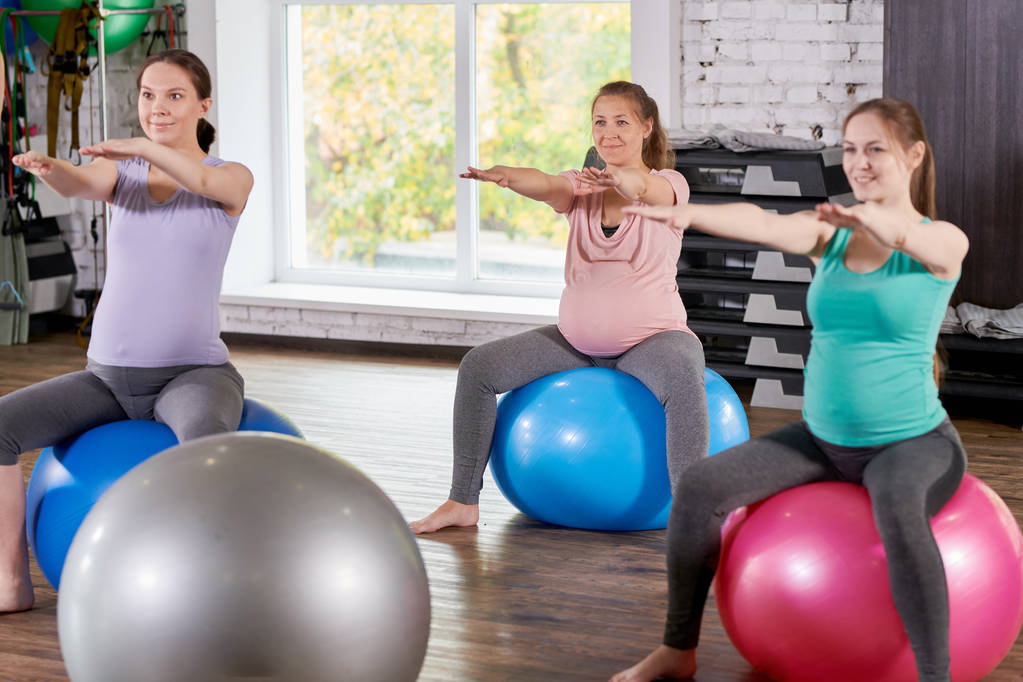Discover the benefits of aerobic exercises such as walking and swimming for alleviating back pain during pregnancy.
Are Aerobic Exercises Like Walking and Swimming Good for Back Pain During Pregnancy?
During pregnancy, many women experience back pain, which can range from mild discomfort to severe pain. Back pain during this time can be caused by various factors, including changes in hormone levels, weight gain, and the shifting center of gravity due to the growing baby. While it may be tempting to avoid physical activity and rest more, research shows that staying active can actually help alleviate back pain and improve overall well-being during pregnancy.

Understanding Back Pain During Pregnancy
Before diving into the benefits of aerobic exercises like walking and swimming, it’s important to understand why pregnant women may experience back pain. One of the main causes is the hormone relaxin, which loosens the ligaments and joints in preparation for childbirth. As a result, the spine can become less stable, leading to muscle strain and discomfort. Additionally, the weight gain associated with pregnancy can put extra pressure on the back, further exacerbating the pain.
During pregnancy, a woman’s body goes through numerous changes to accommodate the growing baby. These changes can have a significant impact on the spine and contribute to back pain. Understanding how pregnancy affects the spine can help expectant mothers find relief and take proactive steps to alleviate discomfort.
Causes of Back Pain in Pregnant Women
Aside from hormonal changes and weight gain, other factors can contribute to back pain during pregnancy. Poor posture, especially when sitting or standing for long periods, can strain the back muscles. Lifting heavy objects incorrectly or abruptly twisting the body can also lead to discomfort. Furthermore, stress and anxiety can manifest physically as muscle tension, leading to back pain.
It’s important for pregnant women to be mindful of their posture and body mechanics to minimize the risk of developing back pain. Engaging in stress-reducing activities such as prenatal yoga or meditation can also help alleviate muscle tension and promote overall well-being.
How Pregnancy Affects the Spine
Pregnancy can have a significant impact on the spine. As the baby grows, the center of gravity shifts forward, potentially causing an excessive curvature of the lower back. This increased curvature can strain the muscles and ligaments around the spine, leading to pain and discomfort.
Furthermore, the expanding uterus can put pressure on the sciatic nerve, which runs from the lower back down to the legs. This pressure can result in sciatica, a condition characterized by sharp, shooting pain that radiates along the nerve pathway. Sciatica can significantly impact a pregnant woman’s mobility and overall quality of life.
Understanding the anatomical changes that occur during pregnancy can help women better manage and prevent back pain. Implementing exercises that strengthen the core muscles, such as pelvic tilts and gentle stretches, can provide stability and support to the spine. Additionally, using supportive pillows and cushions while sitting or sleeping can help maintain proper spinal alignment and alleviate discomfort.
The Importance of Exercise During Pregnancy
Engaging in regular physical activity during pregnancy offers numerous benefits for both the mother and the developing baby. Exercise helps improve circulation, boosts energy levels, reduces pregnancy-related discomfort, and promotes better sleep. For women experiencing back pain, certain aerobic exercises can specifically target the affected muscles and provide relief.
During pregnancy, the body undergoes significant changes to accommodate the growing baby. These changes can sometimes lead to discomfort and fatigue. However, by incorporating exercise into their daily routine, pregnant women can alleviate these symptoms and improve their overall well-being.
One of the key benefits of exercise during pregnancy is improved circulation. As the body adapts to the growing baby, the heart has to work harder to pump blood to all parts of the body. Regular physical activity helps strengthen the cardiovascular system, ensuring an adequate supply of oxygen and nutrients to both the mother and the baby.
In addition to improving circulation, exercise also boosts energy levels. Many pregnant women experience fatigue, especially during the first and third trimesters. However, by engaging in moderate exercise, such as brisk walking or prenatal yoga, women can increase their energy levels and combat feelings of tiredness.
Benefits of Staying Active for Mother and Baby
When pregnant women engage in aerobic exercises like walking and swimming, they not only strengthen their muscles but also enhance their overall cardiovascular fitness. Increased cardiovascular fitness can be particularly beneficial during labor and delivery, as it improves endurance and may reduce the risk of certain complications. Additionally, exercise releases endorphins, which are natural mood-boosters, helping to alleviate stress and promote a positive mindset.
Regular exercise during pregnancy can also have long-term benefits for both the mother and the baby. Studies have shown that babies born to active mothers tend to have a healthier birth weight and a lower risk of developing chronic diseases later in life. Furthermore, exercise during pregnancy can help prevent excessive weight gain, which is associated with a higher risk of complications such as gestational diabetes and high blood pressure.
It is important to note that not all exercises are suitable for pregnant women. Activities that involve a high risk of falling or abdominal trauma should be avoided. It is always recommended to consult with a healthcare provider before starting or continuing an exercise routine during pregnancy.
Risks of Physical Inactivity During Pregnancy
On the other hand, physical inactivity during pregnancy can lead to muscle stiffness, joint pain, and decreased flexibility. It can also increase the risk of developing gestational diabetes, high blood pressure, and excessive weight gain. By incorporating aerobic exercises into their routine, pregnant women can reduce these risks and maintain a healthy lifestyle throughout their pregnancy.
Furthermore, exercise can help alleviate common discomforts associated with pregnancy, such as back pain and swelling. Strengthening the muscles that support the spine and practicing gentle stretching exercises can provide relief and improve overall mobility.
In conclusion, exercise plays a vital role in maintaining a healthy pregnancy. By staying active, pregnant women can improve their circulation, boost their energy levels, and reduce the risk of complications. It is important to listen to the body and choose exercises that are safe and appropriate for each stage of pregnancy. With the guidance of a healthcare provider, women can enjoy the benefits of exercise while ensuring the well-being of both themselves and their babies.
Aerobic Exercises for Pregnant Women
Now that we understand the importance of staying active during pregnancy, let’s explore two specific aerobic exercises that are particularly beneficial for back pain relief: walking and swimming.
The Role of Walking in Alleviating Back Pain
Walking is a simple yet effective exercise that can be easily incorporated into a daily routine. It is a low-impact activity that helps strengthen the muscles supporting the back while also improving cardiovascular health. Walking also encourages proper posture, which can alleviate strain on the back.
When pregnant, it’s essential to choose appropriate footwear that provides adequate support and cushioning for the feet and joints. Investing in a good pair of walking shoes can make a significant difference in comfort and stability during the exercise.
To maximize the benefits, pregnant women should aim to walk for at least 30 minutes most days of the week, gradually increasing both speed and distance as their bodies permit. It’s important to listen to the body’s signals and adjust the intensity accordingly. Walking with a partner or joining a prenatal exercise class can also provide motivation and social support.
Swimming as a Low-Impact Exercise
Swimming is another excellent aerobic exercise for pregnant women, especially those experiencing back pain. The buoyancy of the water supports the weight of the body, reducing stress on the joints and muscles. This makes swimming a particularly suitable exercise for those with joint issues or discomfort.
When swimming during pregnancy, it’s crucial to choose strokes that are safe and comfortable. The breaststroke is generally considered the most suitable stroke, as it doesn’t involve any twisting or jarring movements. However, it’s important to avoid diving or any strokes that strain the abdominal muscles, as this can be harmful to both the mother and the baby.
In addition to being a low-impact exercise, swimming provides a full-body workout, engaging the arms, legs, and core muscles. The water’s resistance helps build muscle strength, which can alleviate back pain over time. It also promotes better circulation and can help reduce swelling in the lower extremities, a common issue during pregnancy.
When swimming, pregnant women should ensure they have proper supervision and access to a safe and clean swimming pool. It’s also essential to listen to the body and take breaks as needed. Hydration is crucial, so drinking water before, during, and after swimming is highly recommended.
Safety Measures for Exercising While Pregnant
While exercise is beneficial during pregnancy, it’s crucial to prioritize safety and listen to your body. Here are some precautions and tips to keep in mind when engaging in these aerobic exercises:
Precautions When Walking
- Wear supportive footwear to minimize strain on the feet and legs.
- Choose flat, even surfaces to reduce the risk of tripping or falling.
- Stay hydrated by drinking plenty of water before, during, and after the walk.
- Listen to your body and adjust the pace or distance as needed.
Tips for Safe Swimming During Pregnancy
- Start with gentle warm-up exercises, gradually increasing intensity.
- Avoid overheating by swimming in a pool with a comfortable temperature.
- Use a floatation device or swimming aids if needed for added support.
- Practice proper breathing techniques to ensure a steady supply of oxygen.
Other Helpful Techniques for Managing Back Pain
In addition to incorporating aerobic exercises into your routine, there are other techniques that can help manage back pain during pregnancy.

Prenatal Yoga and Stretching
Prenatal yoga and gentle stretching exercises can greatly alleviate back pain by improving flexibility and strengthening core muscles. These exercises help promote proper alignment of the spine and relieve tension in the back muscles. However, it’s crucial to seek guidance from a certified prenatal yoga instructor to ensure the exercises are safe and appropriate for pregnancy.
Proper Posture and Ergonomics
Practicing good posture and ergonomics throughout the day can significantly reduce back pain. Ensure that your workspace, whether at home or in the office, is set up ergonomically, with a supportive chair and proper alignment of the computer and desk. When sitting or standing, maintain a straight back with shoulders relaxed and avoid slouching. Using a pregnancy support belt can also provide additional support and alleviate back strain.
In conclusion, aerobic exercises like walking and swimming can be highly beneficial for pregnant women experiencing back pain. By understanding the causes of back pain during pregnancy and how exercise can help, expectant mothers can take proactive steps to manage their discomfort and promote overall well-being. Remember to prioritize safety, listen to your body, and consult with your healthcare provider before starting any new exercise routine. Embrace the joy of movement and enjoy your pregnancy journey with reduced back pain!



